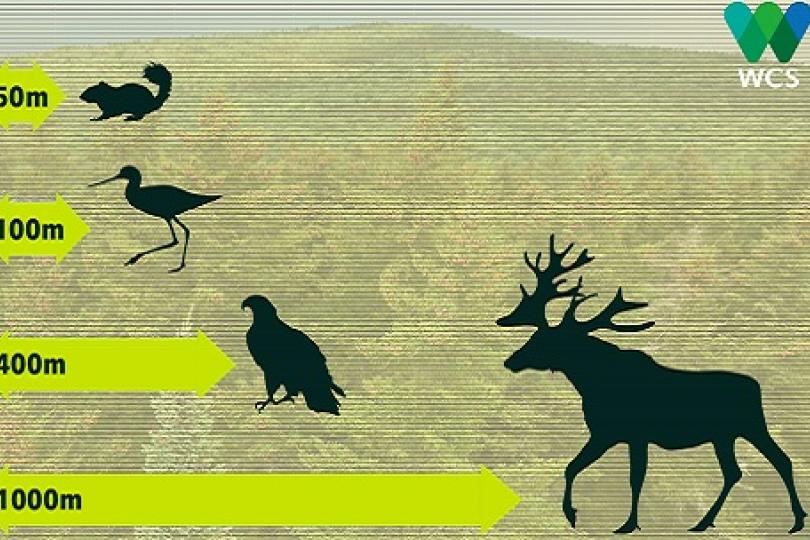Reed co-authors report on keeping social distance from wildlife
Editor's note: this press release was originally published by WCS.
Six feet of social distance may be the new norm between people, but a new WCS report says if you don’t want to disturb wildlife, you need to keep waaaaaaay back.
The report, which was recently published in the journal Nature Conservation, looked at 38 years of research on the effect of non-consumptive recreation, such as hiking, on wildlife to attempt to identify the point at which recreation begins to trigger behavioral or physiological changes in animals.
“Nature-based outdoor recreation is the most widespread human land use in protected areas, and is permitted in more than 94 percent of parks and reserves globally. People generally assume that recreation activities like hiking are compatible with conservation goals, but harmful effects are a growing concern for land managers. Information from this study is critical to inform science-based solutions to avoid or reduce negative effects of recreation on wildlife,” said co-author Sarah Reed, Switzer Fellow and Executive Director of the Robert and Patricia Switzer Foundation.
They found that for wading birds and songbirds, threshold distances were generally less than 100 meters (109 yards), whereas for hawks and eagles they were greater than 400 meters (437 yards). Mammal threshold distances varied widely from 50 meters (54 yards) for small rodents to 1,000 meters (1,093 yards) for large ungulates such as moose.
Outdoor recreation is increasingly recognized for its potential negative effects on wildlife individuals and populations, yet planners and natural resource managers often feel they lack robust scientific recommendations to inform the design of recreation infrastructure and management of recreation activities.
Said Cristina Mormorunni, Regional Director of WCS’s Rocky Mountain Program “Recreation’s footprint is growing, especially during COVID, both in scale and duration. Now it is year-round and penetrating further and further into wildlands. We are working hard to elevate these realities and engage the outdoor industry and the public and work collaboratively to lessen our impacts on wildlife and wildplaces.”
The authors did not find a significant difference between threshold distances of different recreation activity groups. In addition, there were large gaps in the scientific literature regarding several recreation variables and taxonomic groups including amphibians, invertebrates, and reptiles.
The findings highlight the need for additional studies to measure effects on when, where, and what types of recreation lessen their impacts on wildlife. A deeper understanding of recreation ecology will be important both for outdoor enthusiasts, and to provide better recommendations to natural resource managers tasked with conserving biodiversity while providing human access to public lands.
The report was written through a grant to WCS from the Sonoma Land Trust. Authors include Jeremy Dertien of Clemson University, Courtney Larson of The Nature Conservancy, and Sarah Reed of the Robert and Patricia Switzer Foundation.
Additional Resources
EurekAlert! press release - Safe distance: How to make sure our outdoor activities don't harm wildlife

